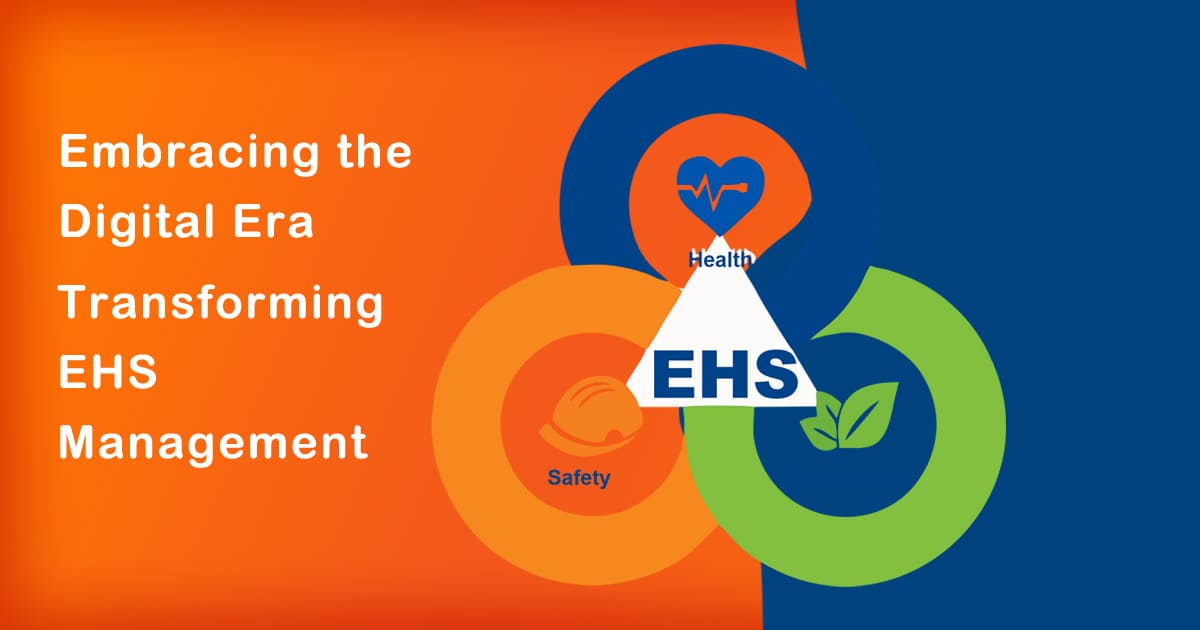Introduction
The digital era has brought about a significant transformation in every industry, including Environment, Health, and Safety (EHS) management. The advent of Artificial Intelligence (AI), the Internet of Things (IoT), and Data Analytics has opened up new possibilities to enhance the EHS management system. In India, EHS management has become more crucial than ever before. The country is home to a large population, and the increasing demand for natural resources has put a significant strain on the environment. This blog will delve into how AI, IoT, and Data Analytics are transforming EHS management in India.
The Current Scenario
EHS management in India has come a long way in recent years. The Indian government has implemented various regulations and policies to ensure the safety of workers and the environment. However, there are still significant challenges that need to be addressed. The country is grappling with a high number of accidents in the workplace, hazardous waste management, air and water pollution, and climate change. EHS managers are under immense pressure to maintain compliance with regulations while ensuring the safety of workers and the environment.
The Role of AI in EHS Management
AI has the potential to transform EHS management by making it more efficient and effective. It can help identify potential hazards and risks by analyzing data from various sources. AI-powered sensors can detect hazardous gases, chemicals, and other pollutants in the workplace and alert workers in real-time. AI can also be used to predict and prevent accidents by analyzing data from past incidents and identifying patterns.
In India, AI is already being used to improve EHS management. For example, the Indian Railways is using AI-powered drones to monitor tracks and identify potential hazards. AI is also being used to monitor air quality in Delhi, one of the most polluted cities in the world.
The Role of IoT in EHS Management
IoT is another technology that is transforming EHS management. IoT devices can be used to monitor various aspects of EHS management, such as air and water quality, temperature, humidity, and noise levels. IoT devices can also be used to track workers’ health and safety by monitoring their vitals, fatigue levels, and exposure to hazardous substances.
In India, IoT is being used to monitor air and water quality in cities. The Indian government has launched the National Clean Air Program (NCAP), which aims to reduce air pollution levels by 20-30% by 2024. IoT devices are being used to monitor air quality in cities such as Delhi, Mumbai, and Bengaluru.
The Role of Data Analytics in EHS Management
Data Analytics is a crucial component of EHS management. It involves analyzing data from various sources to identify potential hazards, risks, and areas for improvement. Data Analytics can help EHS managers make informed decisions by providing them with insights into the performance of their EHS management system.
In India, Data Analytics is being used to improve EHS management. For example, the Indian Oil Corporation (IOC) is using Data Analytics to monitor the safety of its refineries. Data Analytics is also being used to monitor air and water quality in cities and identify potential sources of pollution.
Conclusion
The digital era has brought about a significant transformation in EHS management in India. AI, IoT, and Data Analytics are being used to enhance EHS management systems and make them more efficient and effective. These technologies have the potential to improve the safety of workers and the environment while ensuring compliance with regulations. However, there is still a long way to go, and more needs to be done to address the significant challenges facing EHS management in India. EHS managers need to embrace these technologies and work towards building a safer and more sustainable future.








